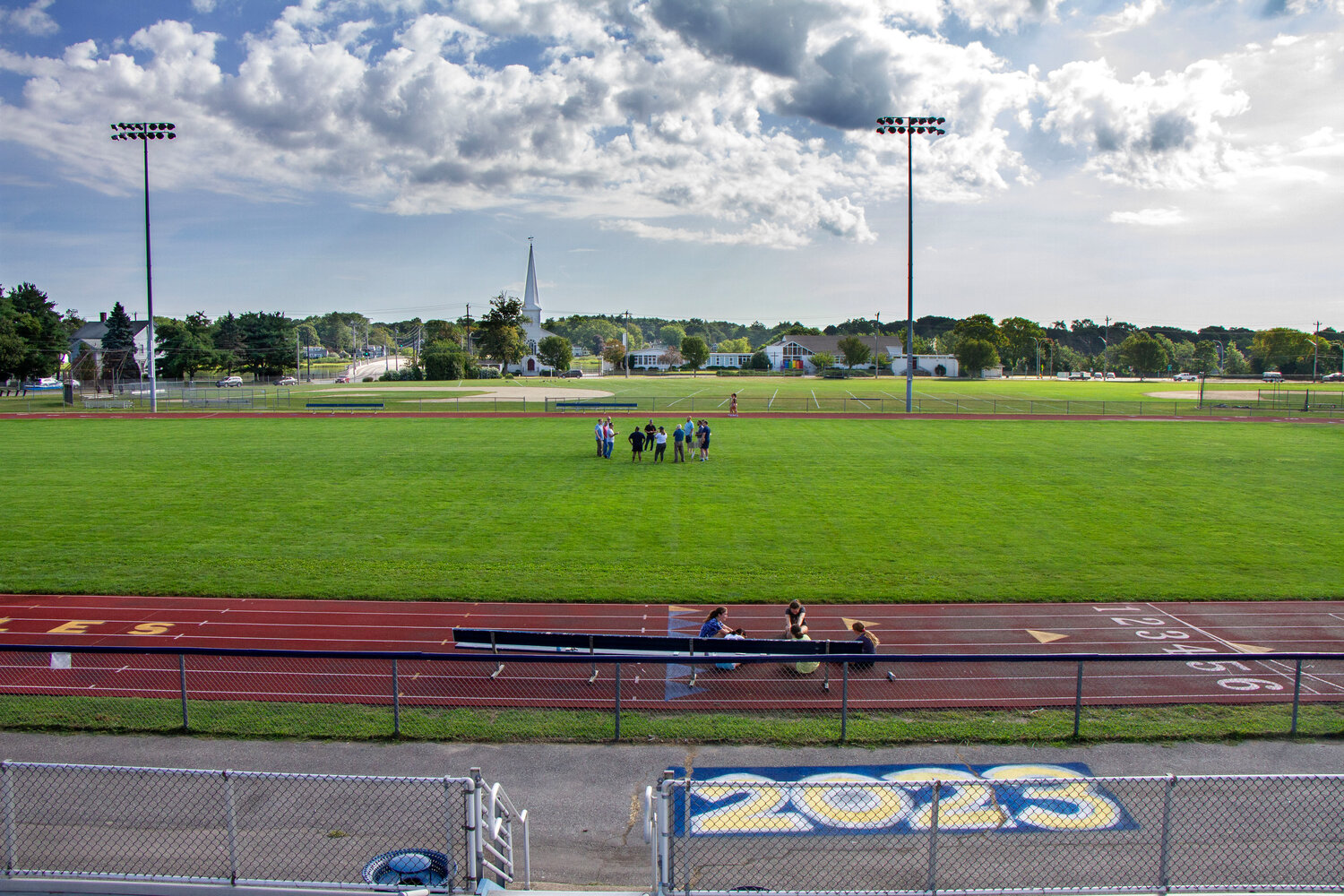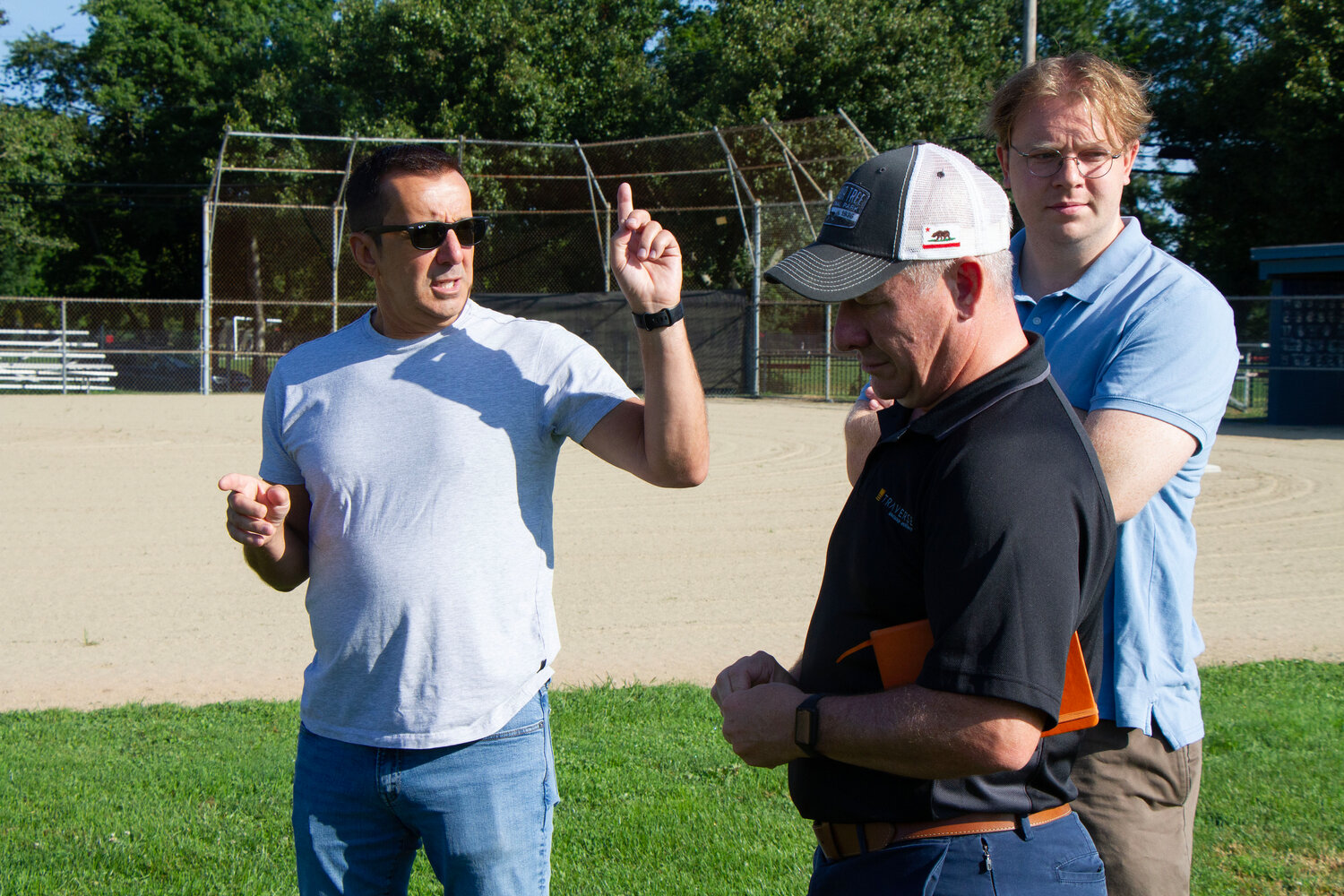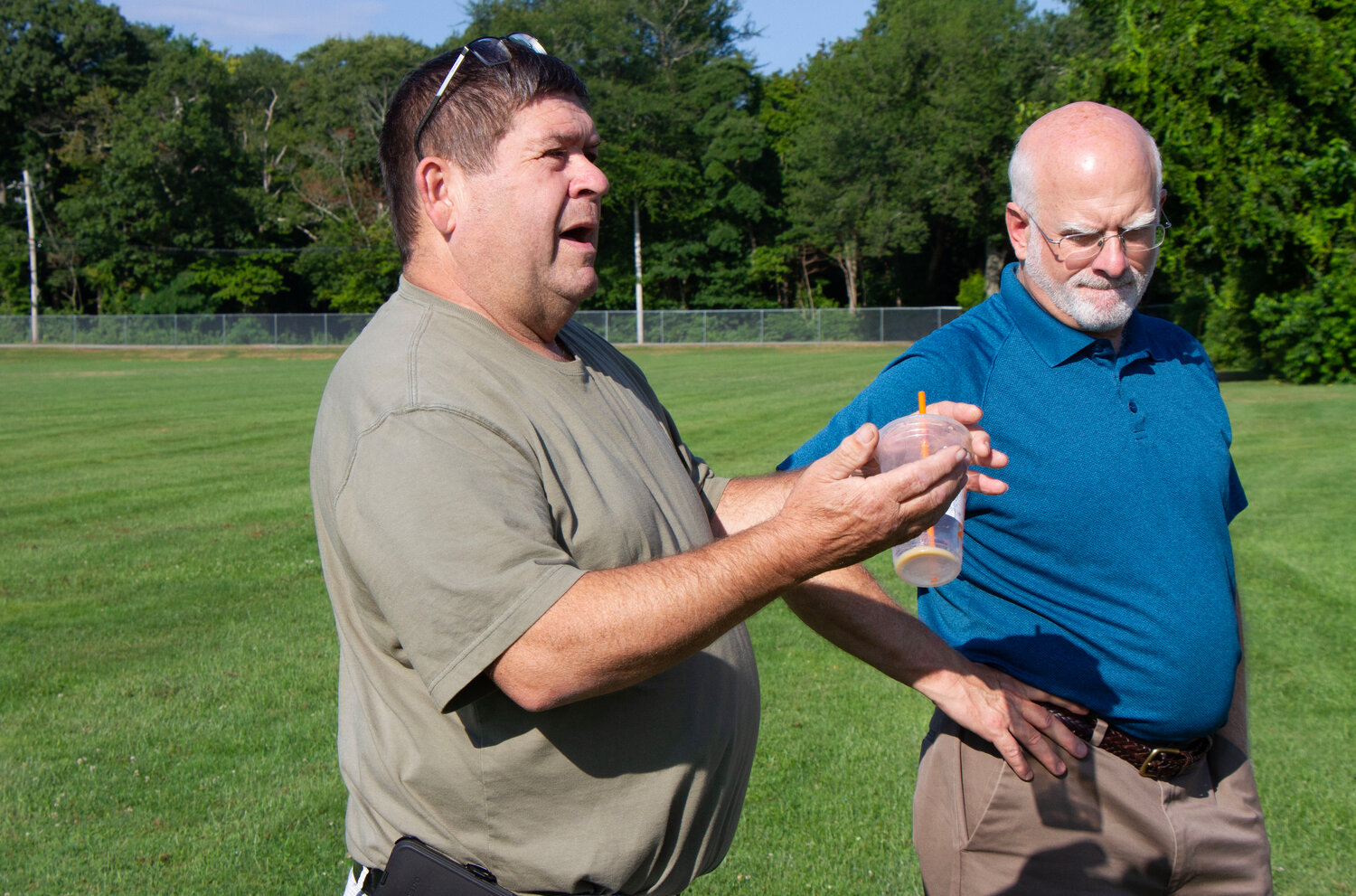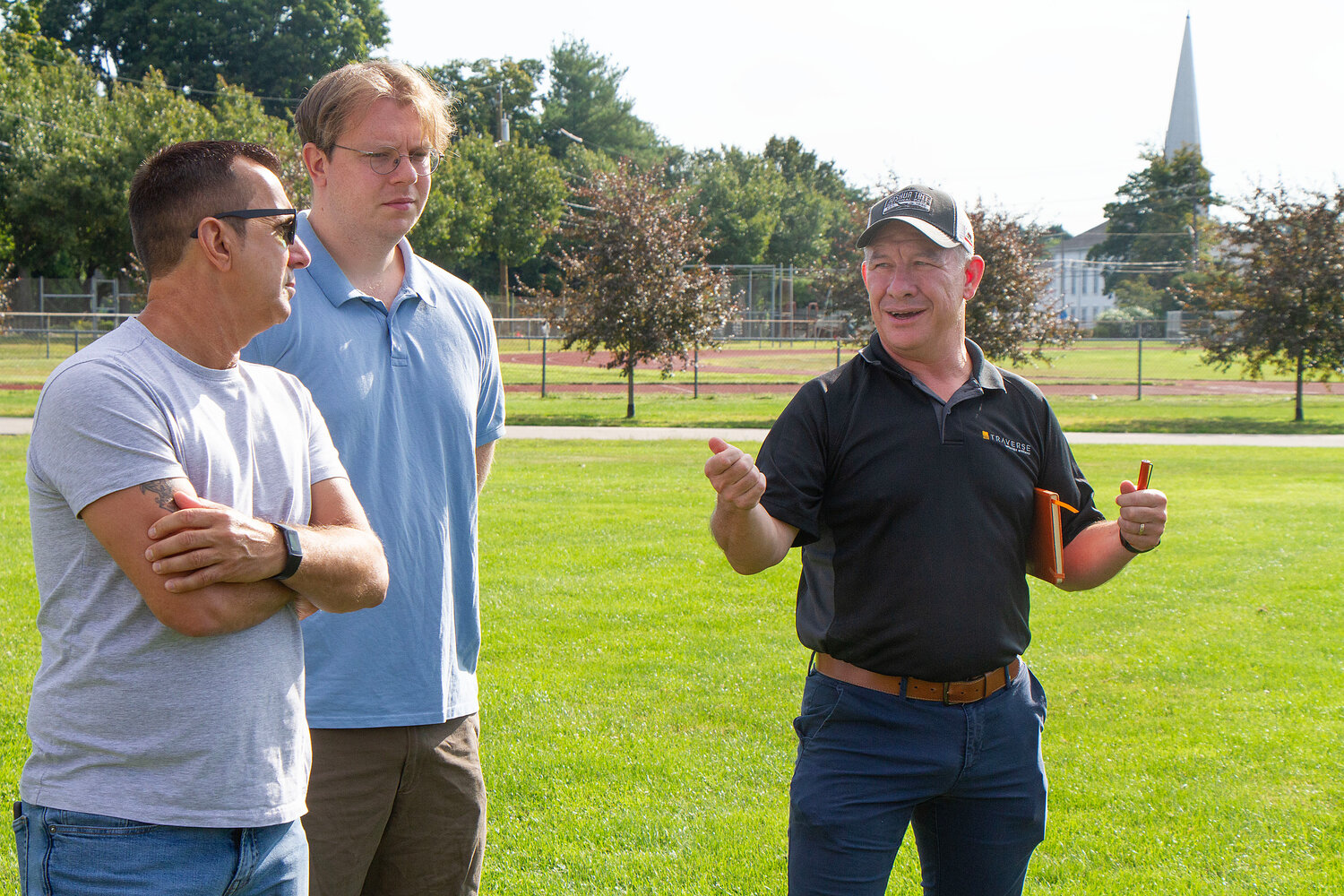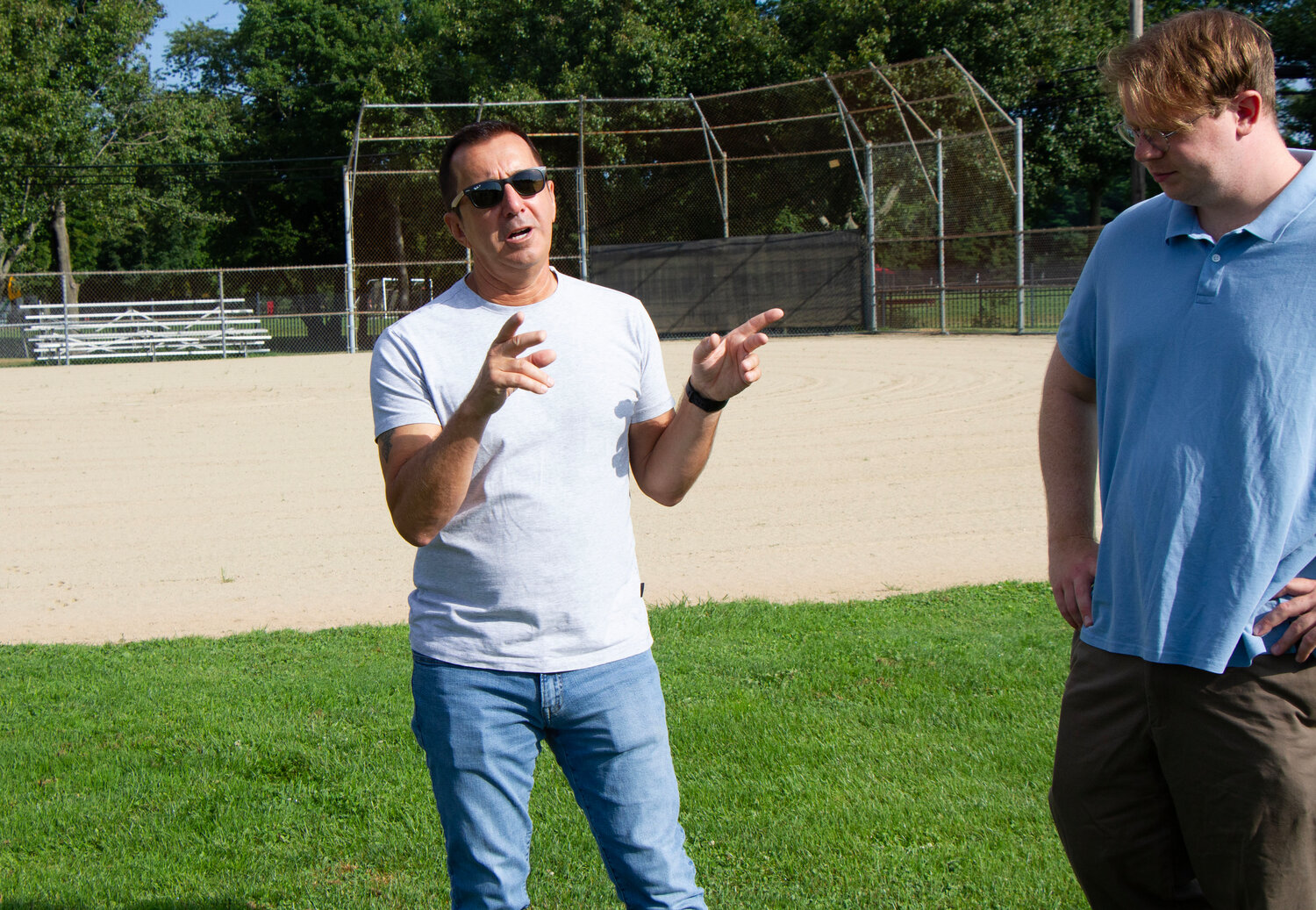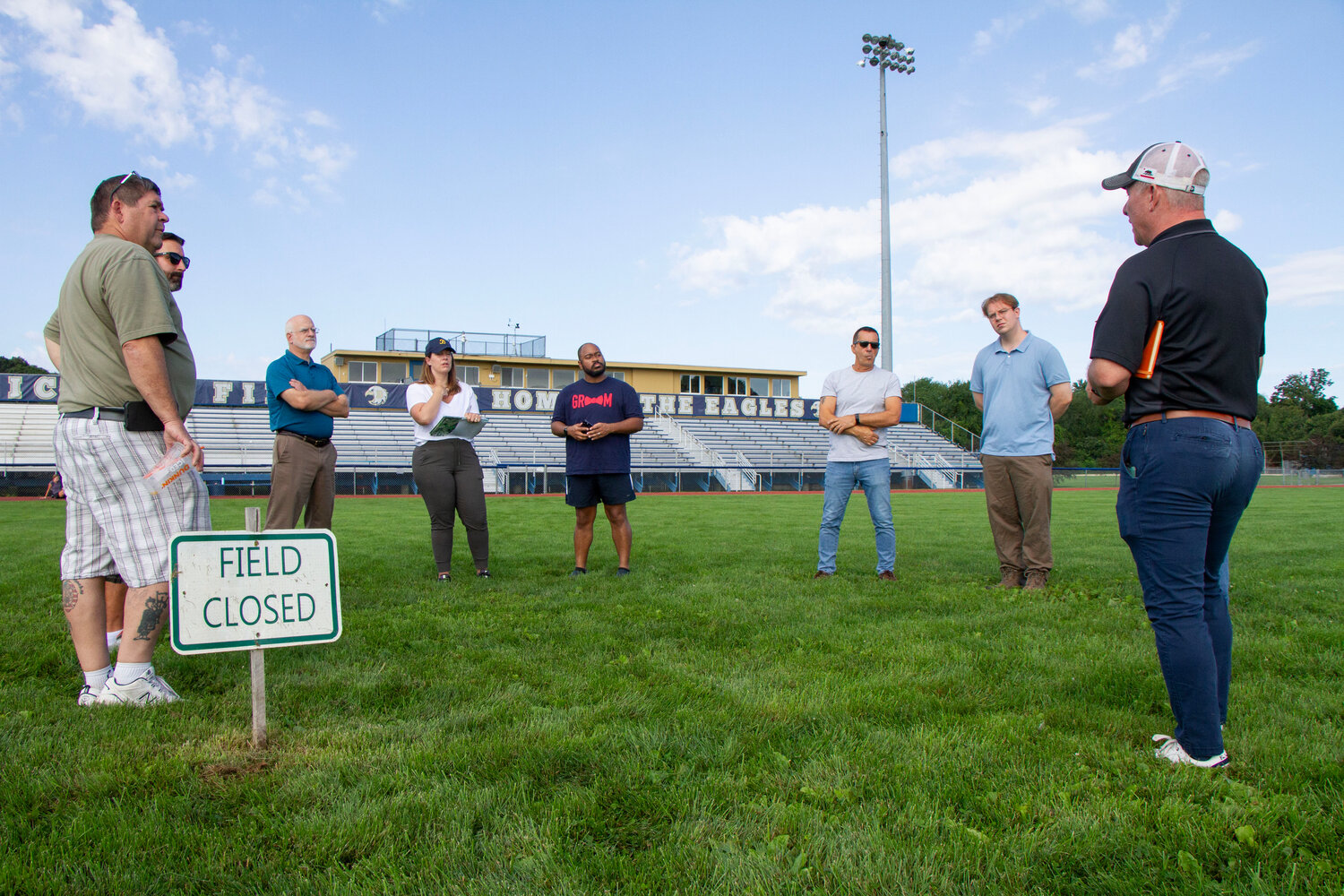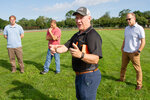‘None of these fields are getting rest’ in Barrington
Consultant offering plan forward for town’s fields
Members of the Barrington Town Council stood at the center of Victory Field on Saturday morning, surrounded by 100 yards of lush green grass and a handful of signs proclaiming “Field …
This item is available in full to subscribers.
Please log in to continue |
Register to post eventsIf you'd like to post an event to our calendar, you can create a free account by clicking here. Note that free accounts do not have access to our subscriber-only content. |
Day pass subscribers
Are you a day pass subscriber who needs to log in? Click here to continue.
‘None of these fields are getting rest’ in Barrington
Consultant offering plan forward for town’s fields
Members of the Barrington Town Council stood at the center of Victory Field on Saturday morning, surrounded by 100 yards of lush green grass and a handful of signs proclaiming “Field Closed.”
Barrington Department of Public Works Superintendent John Renquinha offered an explanation for the off-limits athletic field.
“Right now it’s basically watering, watering, watering, watering,” he said, “and the fertilizing program after the slice-seeding and loaming.”
The grounds crew talk was part of a special Town Council meeting focused on Barrington’s athletic fields and facilities. For the better part of Saturday morning, members of the Council learned about the challenges facing the town’s fields, the effort being made to keep them playable all year long, and the available options to help improve the surfaces heading into the future.
Art Eddy, a principal with Traverse Landscape Architects, led the tour. Before the Council had stepped foot onto a single field at the high school, Eddy explained some of the work Traverse and its subcontractors had already done for the town.
Traverse is expected to share its detailed report on the town’s fields in about a month. The report, Eddy said, will offer recommendations for the future as well as budget estimates and other information. The report is expected to lay the ground work for potential improvements. It is also expected to detail the main issue: an inability to rest the town’s athletic fields and ensure better playing conditions.
Eddy spoke about the soil conditions at Barrington’s fields, the overall quality of the fields, and the groups of people who use the fields.
Twenty-five percent of Barrington’s population is between the ages of five and 18, Eddy said, and 75 percent of that population plays sports. That means one in every five children in Barrington is playing sports on town fields.
That’s a pretty significant number, Eddy said.
Standing in front of the high school, which was the first stop on Saturday’s tour, Eddy and the Council members also discussed the “gorilla in the room”: synthetic turf.
Eddy said synthetic turf can change the hours of usage for a field; one synthetic turf can be the equivalent of three to four natural grass fields, he said.
The conversation — with councilors standing in a circle alongside a member of the Barrington Park and Recreation Commission, officials from the DPW, and the town manager — remained focused on synthetic turf for a while. They spoke about fully synthetic surfaces, such as the stadium field behind East Providence High School.
“East Providence High School was the first fully recyclable synthetic field in the country,” Eddy said.
They spoke about hybrid synthetic surfaces. That is where synthetic fibers are stitched into a playing field surface, strengthening the natural grass and creating a more durable surface.
The town could not install a hybrid synthetic surface at the high school’s library field, Eddy said, because the soil conditions are too rocky. But it could work at the stadium field, he added, or possibly in sections of the field at St. Andrew’s Farm.
“The quality of the turf will go up substantially” where it is used, Eddy said, adding that hybrid turf is common all over Europe and used at every premier league soccer pitch.
Later in the tour, Eddy explained the excessive wear and tear experienced by Barrington’s athletic fields, and the DPW’s efforts to improve the playing conditions.
“They’re trying to rejuvenate fields and it’s really hard, and that’s part of what we’re looking at,” Eddy said. “On top of that, you’re stretching out the fields you have. None of these fields are getting rest.
“If you’re not rotating through fields and allowing fields to be rejuvenated, they’re always going to be distressed. It’s a constant battle. We’re really looking at ‘How do we rest fields?’ and ‘Can we do that?’”
It used to be different
Standing at the center of Victory Field, Eddy told Council members that years ago fewer sports teams used that field.
“It used to be Friday Night Lights — football started and that was it on this field, right?” Eddy said. “So now you’ve got football, soccer, lacrosse, Pop Warner… football is pretty damaging; guys pushing each other. Soccer is pretty damaging when you get into your high use areas. Penalty kicks, goal mouths. They’re getting chewed up.
“That penalty kick and goal mouth are right inside the 10-yard line. You’re getting the high use areas. Then you shut down and come back (in the spring) and play lacrosse on it. Lacrosse is brutal. It is tearing up goal mouths — that goal mouth for boys and girls lacrosse falls right in between the soccer penalty kicks.
“You’ve taken the same area and you’re destroying it. And he’s (Renquinha) got five or six weeks to put it back. That challenge of keeping up with that, and with sports in general, and lacrosse becoming such a big sport, has made it really challenging to keep a field off-line. Now you’re just trying to keep up.”
Why no crown?
Barrington Town Council President Carl Kustell was ready to run some routes.
Kustell joked that while some Council members brought notepads to the fields tour, he brought a football. Kustell carried the ball across all the fields at the high school. When the tour reached the stadium field (aka, Victory Field), Kustell asked why there was no crown to the field, referring to a slightly raised center portion of the gridiron.
Renquinha said the town would need to take Victory Field off-line for about a year-and-a-half in order to reconstruct the field with a crown.
Kustell asked BHS Director of Athletics George Finn how he could accommodate the teams if he could not use Victory Field for a year-and-a-half. Finn said the soccer teams could use the other fields at the school, but the football team would likely face an entire season of away games.
Eddy said it would require less time for the town to completely replace the stadium field with synthetic turf. He said that work could be done in between the fall and spring seasons, possibly.
Barrington Park and Recreation Commission member TR Rimoshytus said it would be cheaper to do that project in the winter, although Eddy cautioned that weather could be a factor during that time of year.
Kustell also asked about the condition of the high school track, which circles the stadium field. Finn said it was due for some work; it was last resurfaced in 2003.
Council member Kate Berard asked if this same conversation focused on athletic fields was taking place among school officials.
In the minority
Barrington High School is one of the few schools in the country where the field hockey team plays its games on natural grass.
In fact, 95 percent of field hockey teams in the United States play on synthetic turf, Finn said.
That may come into play more this year since a new rule goes into action requiring that natural grass field hockey fields be cut to a certain height and if that grass is too tall, the home team’s coach will be issued a penalty card.
Finn said the BHS field hockey team currently plays its home games on a section of the campus that also serves as the outfield for the Barrington baseball team. It also abuts the practice fields for the football team.
Eddy said that cutting a field’s grass shorter requires altering the soil profile for that field.
Second stop
Originally planned for six stops, Councilors adjusted the schedule for the fields tour and reduced the number after the visit to the high school ran longer than expected.
The second stop — St. Andrew’s Farm Field — offered Councilors a closer look at the results of heavy play and little rest. The large green expanse was interrupted by splotches of brown, where the grass had been chewed up and worn away. Councilor Braxton Cloutier took time to walk the field and get a close-up look at the wear and tear.
Meanwhile, officials considered the possibility of installing synthetic turf or hybrid turf at St. Andrew’s Farm Field. Town Manager Phil Hervey said he needed to check the town’s agreement with the person who gifted the field to Barrington to make sure it allowed for those changes. A question also surfaced about whether lights could be installed there.
Berard said she felt more inclined to go with synthetic turf if the project included overhead lighting and other infrastructure improvements. Otherwise, she said, she prefers the hybrid approach.
Eddy said the new lighting technology reduces or nearly eliminates any light spillover onto properties neighboring athletic fields. He also said the use of LED lights is a great cost-saver. Currently, Victory Field does not have LED lights.


